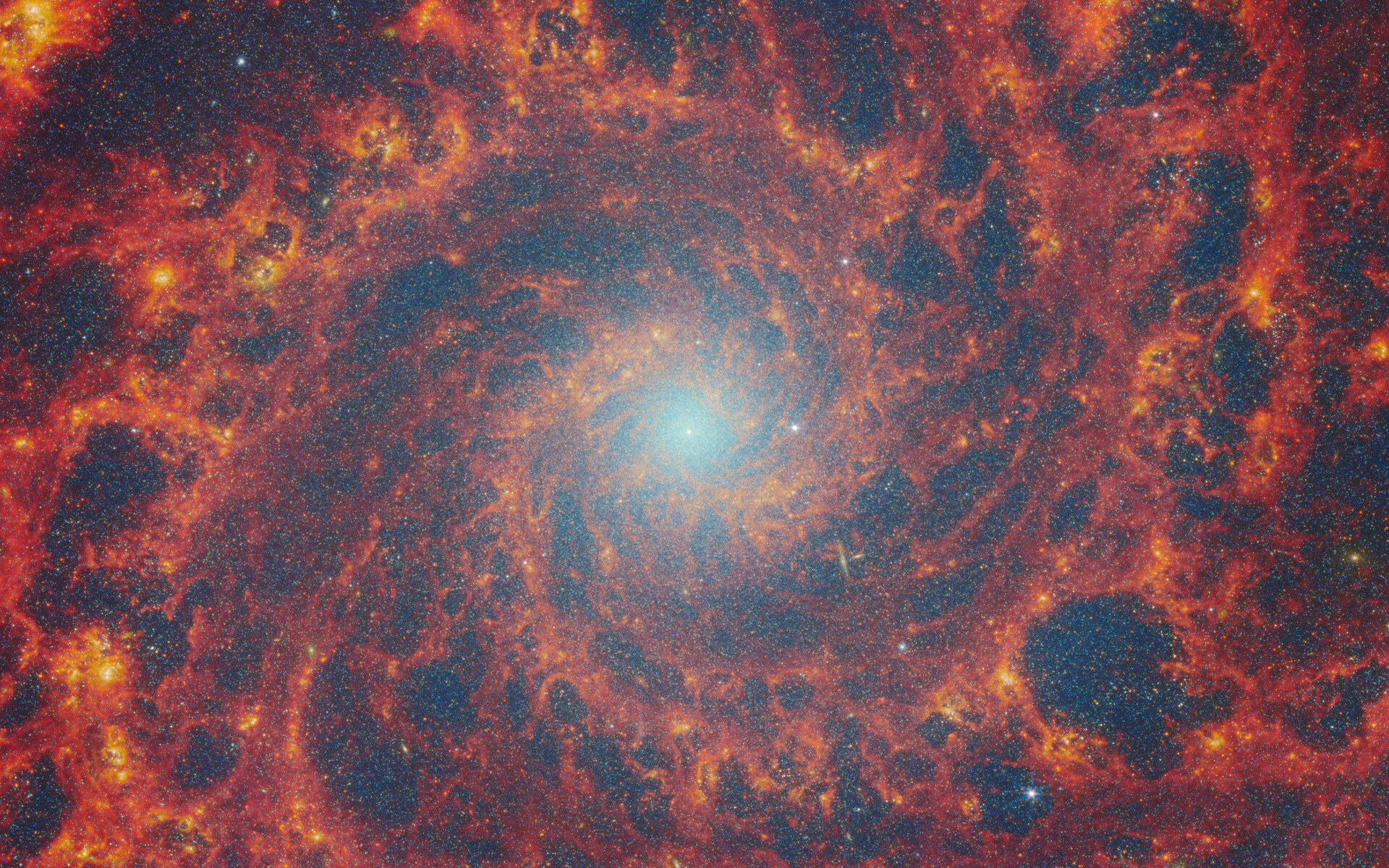
This Hubble Space Telescope image reveals NGC 628—better known as the Phantom Galaxy—presenting its majestic spiral arms and glowing core in striking detail. Captured across filters from the near-infrared to the ultraviolet, the portrait spans the galaxy’s central 15,000 light-years, showcasing both mature star populations and active star-forming regions.
Location
Messier 74 (NGC 628) lies in the northern constellation Pisces, about 30 million light-years from Earth. Its face-on orientation makes it an ideal laboratory for studying spiral structure without the complications of dust lanes seen in edge-on systems. At this distance, light we now observe left the galaxy when early hominids were taking their first steps on Earth. en.wikipedia.org
Covering roughly 10.5 by 9.5 arcminutes on the sky, M74’s apparent size corresponds to an actual diameter of about 95,000 light-years—comparable to our own Milky Way. Its low surface brightness earned it the nickname “Phantom Galaxy,” as it is one of the faintest objects in Charles Messier’s catalog to view through small telescopes.
Structure
At the galaxy’s heart lies a bright, yellowish bulge glowing with older, redder stars. This central region dominates the near-infrared light, indicative of a long history of star formation that has since quieted. Fine dust lanes spiral inward, suggesting ongoing, albeit subdued, activity in the inner disk.
Radiating outward are two grand-design spiral arms that wind clockwise around the core. These arms are studded with brilliant blue star clusters—young, massive stars only a few million years old—and reddened H II regions where gas clouds collapse to form new stars. Dark lanes of interstellar dust thread between these knots, outlining the galaxy’s underlying density wave pattern.
Scientific Importance
As an archetypal SA(s)c galaxy, M74 serves as a benchmark for theories of spiral density waves. By analyzing its arms at multiple wavelengths, astronomers trace how gas clouds respond to wave-driven compressions, triggering sequential star formation along the arms. This helps refine models of galactic evolution and the interplay between stellar feedback and interstellar medium dynamics.
The relatively unperturbed structure of M74—due to its isolation from major neighbors—allows researchers to study internal instabilities without external tidal influences. Precise measurements of its rotation curve and mass distribution also contribute to our understanding of dark matter’s role in shaping galactic disks.
Visual Impact
The image’s color gradient—from the warm, yellow core to the cool, blue periphery—maps stellar ages across the disk. Clusters of hot young stars punctuate the arms like cosmic beacons, while the reddish glow of hydrogen-alpha emission highlights active star-forming regions.
Foreground stars in the Milky Way appear with distinctive diffraction spikes, adding a three-dimensional context to the scene. Their spiky silhouettes frame the Phantom Galaxy without obscuring it, inviting the eye to wander across the spiral tapestry and appreciate its immense scale and beauty.
Credit
ESA/Hubble & NASA
